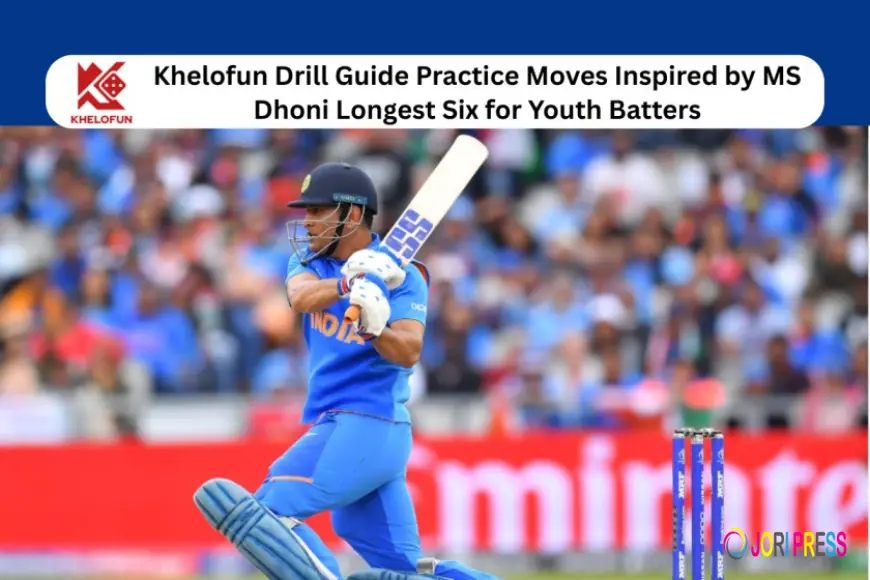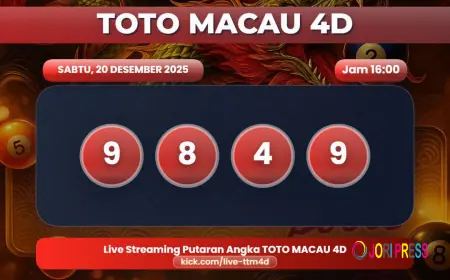Khelofun Drill Guide Practice Moves Inspired by MS Dhoni Longest Six for Youth Batters

There are few cricket moments as memorable as MS Dhoni’s longest six, a thunderous strike that went long, high, and deep into cricket lore. It wasn’t just sheer power; it was technique, timing, composure, and confidence in a clutch situation.
For young batters who aspire to hit the ball with the same conviction and authority, that strike is more than just a highlight- it’s an education.
We’ll look to unpack the method behind MS Dhoni Longest Six, what made it so special, and how aspiring cricketers can hone similar aspects in their own batting through drills.
The Moment That Defined Power and Precision
In the 2012 ODI encounter against New Zealand in Christchurch, Dhoni struck the ball for one of the most recognizable and iconic sixes into the night. With the ball hovering about 112 meters, the six disappeared into the sky, creating a silhouette above the stadium.
The shot wasn’t just strength; it was pure technical ability, excellent judgement, and an ability to maintain balance. Dhoni picked a slower ball early, cleared his front leg, and swung aggressively through the line of the ball with pure timing.
That one single swing tallies up the Dhoni brand, calm head, powerful core, and enormous bat speed.
The Philosophy Behind Dhoni’s Power
Before beginning drills, it is important to understand how Dhoni conceptualized power hitting. He was not the type of batter who utilized only muscle developed in the gym for strength in hitting. His strength in hitting derived from:
Strong wrists and forearms that (1) allowed him to have last-moment acceleration.
A stable, broad base, which ensured even when swinging hard, he maintained balance.
Explosive follow-through, which helped complete the arc of the bat fully.
Situational awareness, when to attack and wait to strike.
These aspects helped him formulate his version of power hitting- disciplined, technical, and smart.
Drill 1: The Forearm Strength Routine
If there was one physical attribute to match Dhoni's batting, it is the semblance of 'forearm power'. His 'forearm power' assisted him in whipping balls from even low deliveries into large sixes.
Try this drill:
Utilize a light dumbbell or resistance band.
Either sit or first stand, with your elbow supported on a stable surface, allowing your wrist to hang straight down.
Slowly draw wrist down and up mimicking the wrist extension and 'whip' action in a controlled manner, aiming for about 15-20 repetitions per arm.
After this drill, you could add in wrist rotations to simulate swing of a cricket bat with the help of either a house bat handle or short handled house rod.
Purpose:
This assists in grip control; promotes strength in the forearm and wrist, which is essential for last-moment 'whip' and acceleration, especially if you cannot fully swing through the desired line.
Drill 2: Balance and Body Control Practice
Dhoni had unparalleled base stature. Even when hitting full tosses or yorkers, Dhoni hardly lost his balance.
Practice move:
1. Stand in your batting position.
2. Practiceu shadow swings while keeping your head and shoulders still.
3. Concentrate on landing your front foot, solidly, before swinging.
4. Do this 20-25 times a practice session.
Purpose:
This maintains balance and reduces over-rotation. Balance will help ensure that all the power you generate through your legs and torso will be transferred smoothly into the shot.
Drill 3: Core Power Rotation Drill
A substantial amount of Dhoni's power came from his core muscles—the midsection connecting the upper body to the lower body. Rotational strength training will aid in delivering a controlled and consistent supply of power.
How to do it:
1. Hold a weighted object or a medicine ball.
2. Stand in your batting position, then twist your torso from side to side, mimicking your swing.
3. Perform 3 sets of 15 reps.
Purpose:
Improves rotational force and assists the young batter in using their whole body, instead of only their arms, to generate power.
Drill 4: Timing Through Drop-Ball Practice
One element frequently missing from discussions about MS Dhoni Longest Six is timing. He didn't hit early or hit late, he was spot on time with the ball.
Drop-ball drill:
Have a partner drop a tennis ball from shoulder height.
Try to hit the ball as it begins to bounce back up, making sure to practice with a short swing.
The objective is not hitting distance, but timing! You are not trying to hit the ball quickly; you want to make contact with the ball in rhythm.
Purpose:
There are really three objectives here; hand-eye coordination, patience, and timing through rhythm - all of which support the ability to hit powerfully but with control.
Drill 5: Bottom-Hand Power Development
Often, it was Dhoni's bottom hand that controlled his sixes, letting his bottom hand take the ball over long-on or mid-wicket. Compounding this grip can significantly build bat speed.
Try this:
Using just your bottom hand, hold your bat.
Control the swing without losing grip strength or control of the bat itself.
10-15 times per session is more than enough.
Purpose:
The objective here is to build trust and the strength in your grip. You want to teach your hand, wrist, fingers, issues, and body to direct the bat with precision, even while swinging at full speed.
The Mental Approach: Calm and Composed
No matter the situation, Dhoni displayed remarkable calmness. His mental clarity allowed him to select the ideal ball to strike - something all young cricketers have to develop.
Here are some mindset lessons from the way Dhoni plays:
Be patient: Wait for the right ball to hit. Hitting the ball hard, but without patience, tends to result in mistimed shots.
Read the bowler early: Dhoni typically read a slower ball early, which allowed him to get into position to play a stroke.
Be confident in your preparation: Confidence comes from practice, not from spontaneity.
Do not be afraid of failure: Some of the best batters learn more from the missed balls than the perfect hit.
The difference between a consistent hitter versus an inconsistent one is mental control over muscle control.
The Bigger Picture- Technique Over Power
What made MS Dhoni's longest six special wasn’t just the distance; it was in the way he made it look so easy. He didn’t swing wildly; he timed perfectly. He didn’t rely only on strength; he relied on balance and timing.
For youth batters, this is a big takeaway. Don’t worry about power; focus on contacting the ball cleanly, having a stable stance, and moving with control. Power will come.
As generations of cricketers watch, learn and admire that six, this highlights that even the best moments in sport are cultivated with practice, patience and discipline.
As Khelofun points out, engaging a cricket science is what allows their admiration of such iconic shots to become a part of their sport learning, and enables young talent to continue their learning path from imitation to mastery, one perfect swing at a time.
What's Your Reaction?
 Like
0
Like
0
 Dislike
0
Dislike
0
 Love
0
Love
0
 Funny
0
Funny
0
 Angry
0
Angry
0
 Sad
0
Sad
0
 Wow
0
Wow
0















































